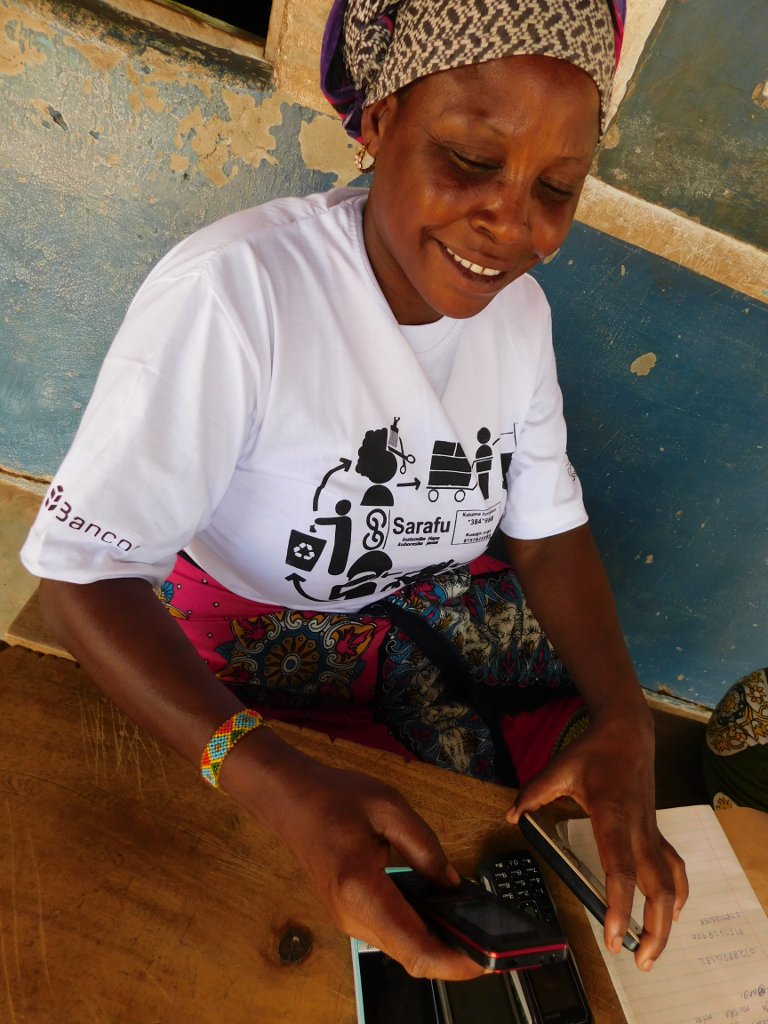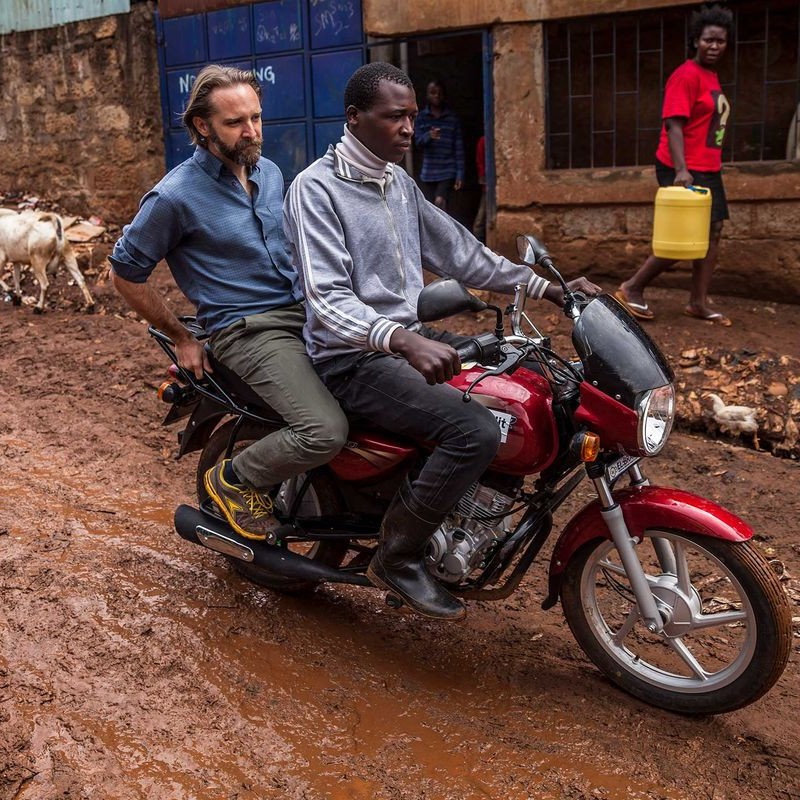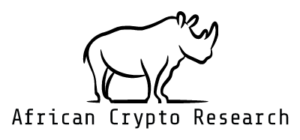Key Points:
- Sarafu Network is a Community Inclusion Currency (CIC) from Kenya that is used by the Kenyan Red Cross as part of its basic income program.
- CIC proponents argue that CICs are a better way to channel spending for economic development and resilience building as compared to direct cash payments that do not circulate in the community for long.
- The Sarafu token is blockchain-based and users don’t need smartphones or internet access to trade it.
- Grassroots Economics foresees a future in which groups and organisations issue their own CICs and are then able to trade them between each other using decentralised finance (DeFi) infrastructure.
Introduction
Sarafu Network is a Community Inclusion Currency (CIC) that was created in Kenya. It is the outcome of eleven years of research and development by Grassroots Economics.
As of writing, the network currently has over 58,000 users, roughly 50% of which are rural. In 2020, the network saw trading volume of approximately US$ 2.5 million.
Among its partners, the network counts leading aid organisations that include the Red Cross, UNICEF and the World Food Program.
In March 2021, the Kenyan Red Cross announced that it would begin distributing blockchain-based Sarafu tokens to anyone who registered for its new nationwide basic income system, also named Sarafu Network.
Sarafu’s success in Kenya has inspired a number of similar initiatives across Africa. The feasibility of such projects is currently being explored in consultation with GE.
This article will outline the theory behind CICs and why they are viewed as a useful tool for development.
Following that, we will turn to the role that blockchain plays in Sarafu’s functionality and how GE envisions that role evolving over time.
The Theory Behind Community Inclusion Currencies
There are underserved communities worldwide that exist in a situation where their national currency does not circulate as widely in their locality. To be precise, these communities suffer from a lack of liquidity.
Every community has individuals that possess different skillsets. For example, a community will have individuals that are farmers, shopkeepers, builders, tailors and so forth.
For a local economy to flourish, such community members need to exchange their goods and services with each other, and this exchange typically requires the use of national currency as an intermediary.
Low liquidity in a community causes internal trade to seize up and for the local market to become unstable.
If there is little national currency available, the market will stagnate. Furthermore, the community is denied the growth opportunities that would arise from the smooth exchange of goods and services within that community.
Faced with this issue, aid agencies have increasingly turned to direct cash payments to community members. However, the sustainability of this approach has been called into question because these cash injections do not circulate for long in the targeted community.
CICs propose to solve this problem by operating as a medium of exchange that can only be used within a certain community or network. In addition, they are designed with certain incentive structures that encourage holders to spend the currency instead of hoarding it.
The CICs are backed by the productive capacity of the community and can potentially be seeded by local government or aid agencies but can also function without such support.
CICs are sometimes referred to as a mutual credit network. This is because the participants in the system are effectively giving each other (interest free) credit.
Since the credit can only be spent inside the network, members are incentivised to do business with each other, thus keeping value inside the network and fostering the growth of network participants.
For this reason, CIC proponents argue that CICs are a better way to channel spending for economic development and resilience building.
To gain a clearer picture of how all this works in practice, we can turn to the Sarafu Network, which is one example of a CIC.
The Sarafu Network
How it Works
In a nutshell, GE works with individuals, groups and organisations to help them to issue credit against their future production in the form of vouchers.
Following this, GE enables network members to trade these vouchers among communities and themselves in exchange for goods and services. The vouchers operate alongside government issued currency and are not meant to replace it.
From 2010 to 2018, the vouchers were issued in paper form and had different names that varied based on community (e.g., Bangla-Pesa, Gatina-Pesa).

One version of Sarafu’s paper vouchers, in use before the transition to digital.
Since August 2018, network members are now issued digital vouchers as blockchain-based tokens named Sarafu. Users do not need internet access or a smartphone to trade their Sarafu tokens.
Instead, transactions take place through USSD codes that can be sent between feature phones and the local telecom network—similar to how a mobile money system like M-Pesa functions.
Of course, in the Sarafu setup, users are interacting with a blockchain and not using national currency.
To introduce Sarafu into a community, a hub is selected. A hub can be a business, school or community owned social enterprise.
In return for agreeing to offer goods and services in exchange for Sarafu tokens, the hub may receive some form of support from GE and its donors.
Community members then register with Sarafu Network by dialling a number from their cell phone.
Following registration, new users receive 50 Sarafu in their blockchain wallet which is tied to their phone number. At the time of writing, 50 Sarafu is worth roughly US$ 0.45 or US$ 1.22 when adjusted for purchasing power.

A Sarafu team member helping to register feature phones on the network.
Why Blockchain?
A striking feature of Sarafu Network is how it is able to use blockchain to deliver its services to marginalised communities. Additionally, users don’t even need smartphones or internet access.
In an age when some crypto users are regularly charged gas fees that exceed US$ 100 for a single transaction, Sarafu’s small transaction sizes are a reminder of how far mainstream crypto infrastructure must go before it fully achieves financial inclusion.
Sarafu’s small transaction sizes are feasible because it is issued on Bloxberg Network. This is an Ethereum-based platform that uses a Proof of Authority consensus algorithm and has free transactions. The validators that process transactions on Bloxberg are a consortium of academic institutions.
GE sees a number of benefits to using blockchain. First, as compared to paper vouchers or cash, blockchain transactions are easily trackable. This means the effectiveness of CICs can be measured, as evidenced by Rebecca Mqamelo’s recent working paper on the impact of weekly CIC transfers.
Scalability is another advantage. Delivering vouchers to users in digital token form is more efficient than paper, as there is no travel involved or concerns about the physical security of the vouchers. Tokens also make it easier to apply and redistribute the holding tax.
GE is planning to launch a new version of its software next month. This will be a custodial key management system that allows community groups to create their own CIC. Will Ruddick, founder of GE, describes the process as such:
“The CICs are created via deployment of a contract on an EVM blockchain. The contract stores the information about the token issuer and determines the expiration rate. Our USSD interface enables users to access their blockchain wallet and transfer tokens.”
Once groups and organisations can create their own CICs, Ruddick sees Sarafu’s role shifting to that of a training token.

Will Ruddick (left), founder of Grassroots Economics, riding a boda boda.
Finally, blockchain also makes it possible for the CICs to be connected to a web of other CICs. This is possible through the use of liquidity pools and automated market makers (AMM) like we see in the decentralised finance space.
An interconnected web of CICs would mean a person could take a CIC issued in their community and go and spend it in another community, while the AMM made sure that exchange rates between the CICs was automatically adjusted.






